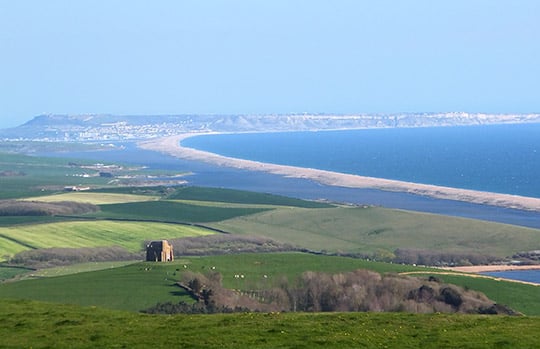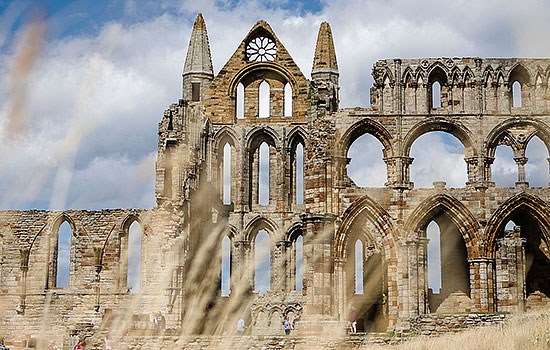History of St Catherine’s Chapel, Abbotsbury
St Catherine’s Chapel was built by the monks of nearby Abbotsbury Abbey as a pilgrimage chapel. Virtually unaltered since, it is one of a handful of chapels of this kind which are located outside the precincts of the monasteries that built them. Its isolated setting allowed the monks to withdraw from the monastery during Lent for private prayer and meditation.

The dedication of the chapel to St Catherine of Alexandria is rare, but her cult was one of the most popular in medieval England.
As the chapel overlooks the sea, it is likely to have been used as a beacon or sea-mark after the Dissolution, which may have ensured its preservation. In later times a navigation light was kept burning at the top of its stair turret.
The Legend of St Catherine
The fireworks known as Catherine wheels commemorate her torture in the 3rd century AD, when the Roman Emperor Maximus I ordered her to be broken on a wheel set with sword points for protesting about the persecution of Christians.
An angel is said to have broken the wheel, and after her subsequent execution Catherine’s body was said to have been conveyed to the heights of Mount Sinai by angels. She became the patron saint of virgins, particularly those in search of husbands, and it was the custom until the late 19th century for the young women of Abbotsbury to go to the chapel and invoke her aid. They would put a knee in one of the wishing holes in the south doorway, their hands in the other two holes, and make a wish.
Description
Although no records survive of its building, the chapel can be dated in style to the late 14th century. It is a sturdy rectangular structure, built entirely of the local golden buff limestone. The walls are high and heavily buttressed to take the stone vaulted roof; rainwater drains off the roof through holes in the parapet wall between the buttresses.
At the north-east corner a stair turret, octagonal on the outside, rises above the roof and gives access to the parapet. It also contains a tiny oratory at roof level. Originally the buttresses and the stair turret were crowned with pinnacles. There are porches on both north and south walls.
The overall effect of the chapel is of a structure far larger than it actually is. The high walls and tall parapets are designed to impress, while the sense of grandeur is further enhanced by the chapel’s lofty position.
Inside, the effect in medieval times would have been just as rich, with stained glass in the windows, and details of the roof picked out in bright colours. At the intersections of the vaulting are bosses carved with foliage, figure subjects and animals. A large triple window lights the east wall, and there are smaller windows on the other walls.
The walk up to the chapel provides excellent views down over Abbotsbury village and the abbey site.
FURTHER READING
Coppack, G, Abbeys and Priories (London, 1990)
Keen, L and Taylor, C, St Catherine’s Chapel at Abbotsbury and the Legend of the Saint (Abbotsbury, 1999)


